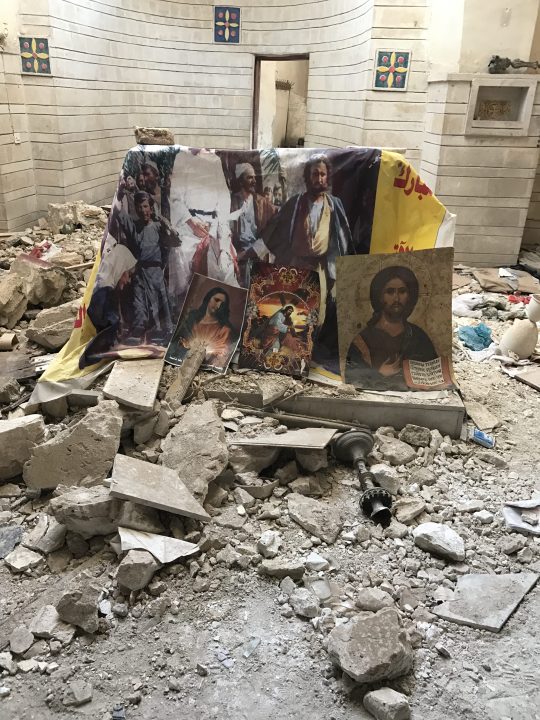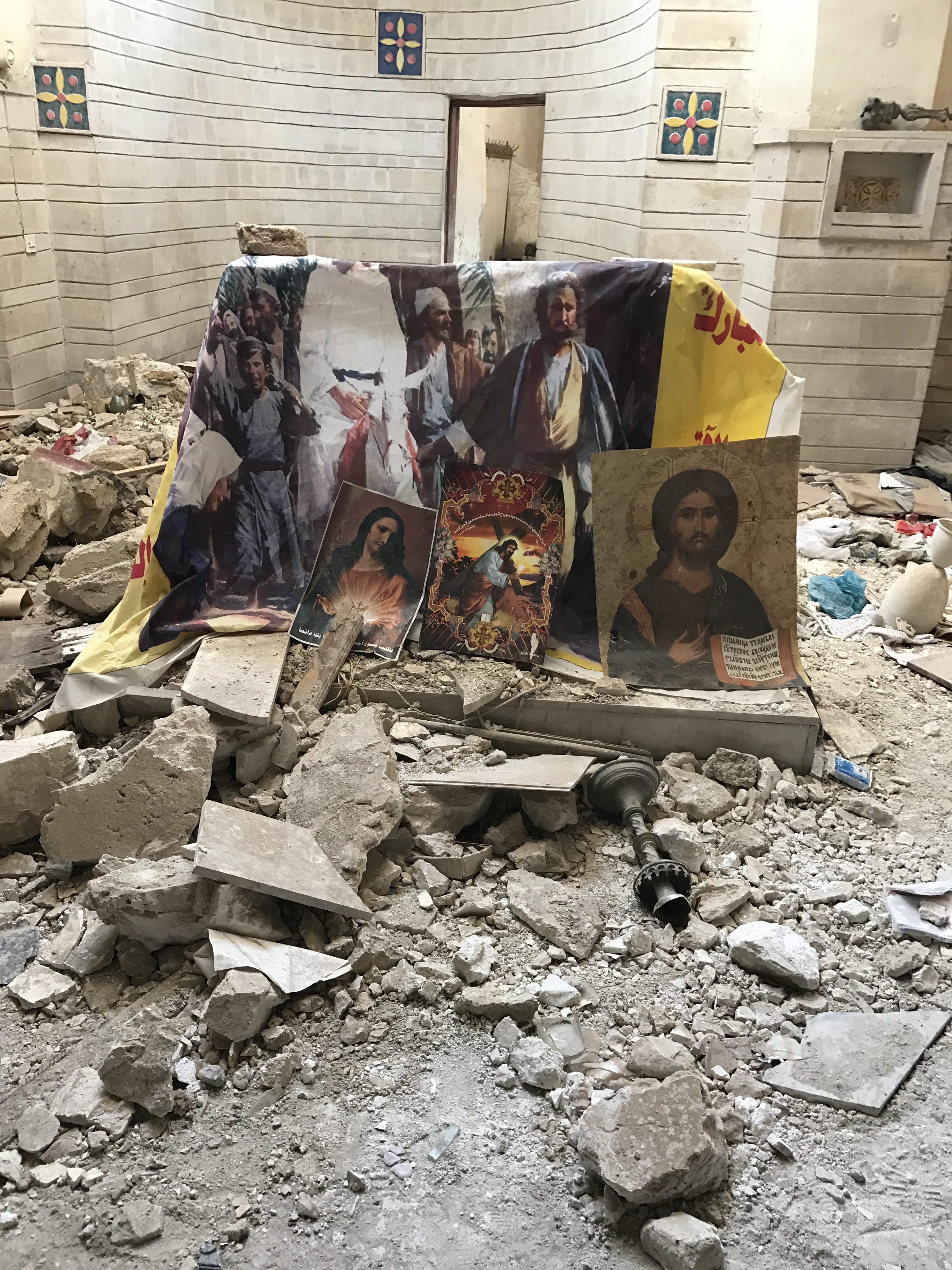Since June 2014, when Islamic State attacked northern Iraq, the desks at Mar Ephrem seminary in Hamdaniya, a city 18 miles southeast of Mosul, have stood empty. Today, they are dusty and rooms once teeming with priests and nuns in training are dark; student ID cards, with titles such as ‘Syrian Catholic: Parish of Bashiqa, Iraq’, litter the floor and a statue of the Virgin Mary lies smashed. Now, Isis are gone. But in their wake an eerie quiet remains and the path of destruction is a visible reminder of their legacy, with thousands of houses destroyed in the fierce battle to retake the city last October. And for the Christians who live in Hamdaniya, the question remains: will they ever be able to return to the place they have called home for thousands of years?
Before Isis came, Hamdaniya (also known as Qaraqosh and Bakhdida, the Turkish and Assyrian names for the same place, by locals) was the largest Christian city in Iraq. It formed part of a mosaic of communities stretching across the Nineveh plains to Mount Sinjar near the Syrian border. Hundreds of thousands of Yazidis and Christians, and members of smaller local sects such as the Kakai, also lived there. Isis systematically sought to exterminate and cleanse these groups, and when its fighters arrived, the Islamists expelled Christians from Mosul. Those who left were among the lucky ones: in Sinjar, thirty mass graves of Yazidi men and women executed in August 2014 have been found by Kurdish Peshmerga who liberated the areas. Thousands of women sold into slavery by Isis are still missing and around 450,000 Yazidis are living in internally displaced persons camps. Yet with Isis gone, the prospect of returning home for many of those forced to flee remains distant. The areas they used to live in Sinjar often lack electricity, schools and hospitals; much-needed international aid is nowhere to be seen. While for many, the continued conflict with Isis on the borders of their region makes life insecure.
Having travelled to Iraq half a dozen times in the last two years, I’ve seen how communities are desperately trying to reconstruct and move on. The current reality is not reassuring. Across Nineveh plains, the Iraqi army and Kurdish Peshmerga have liberated communities but the Isis zealots left behind them a swath of destruction. They tunnelled under houses and through walls during two years of occupation. They blew up holy shrines, and built bomb factories in church buildings, hoping it would hide them from coalition airstrikes. They burned businesses and planted IEDs to kill civilians who return.
For local Christians, the damage is particularly devastating. Near Karemlesh, two ancient holy graves have been left ransacked during the war. In March 2015, Isis blew up a 10th century monastery in Mosul and the 4th century Mar Bahnam monastery south of the city. Isis also destroyed the 3,300 year old ancient city of Nimrud, which was once capital of the Assyrian empire. Their reign in this region was brief, but the damage the Islamists inflicted on precious artefacts of history is permanent. Austen Henry Layard, the 19th British century traveller and archaeologist who explored Nimrud in the 1840s wrote that the site was so large ‘there is enough to fill twenty museums’. He shipped some artefacts back which form the basis of exhibits at the British Museum. But now, many of the artefacts that were left in place are gone: the archaeology from Nimrud preserved in world museums serves as a reminder of what has been lost forever.
Despite the damage, locals are keen to return – but those that do remain in the minority. Some Christians joined a local militia during the war named the Nineveh Plains Protection Units which guards the Christian towns. ‘Maybe 15-20 per cent will come back, most are waiting for immigration, there is no water of electricity here’, Anis Khader, a member of the militia told me. In the churches that were burned and ransacked by Isis, the Christians have put up new posters of Jesus, but the desecrations remain and can’t be easily disguised. In one church, a wooden cutout of the Virgin Mary has been beheaded. A monument for St. George also had its head cut off, while crosses have been prised from the walls.
Matti Rafo, a local Christian born in 1957, says the area has witnessed the worst destruction since the Persian invasion of 1743. At the church of St. George he bent to enter an old mud and brick shrine, uncovering ancient markings of a rare sanctuary that Isis had left untouched. The timeless building had seen assaults in the past and people had returned and rebuilt it. Can today’s Iraqis do the same? Or will the churches of Nineveh now fade into history?







Comments